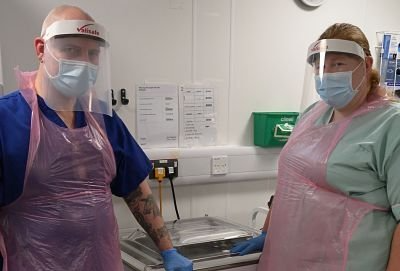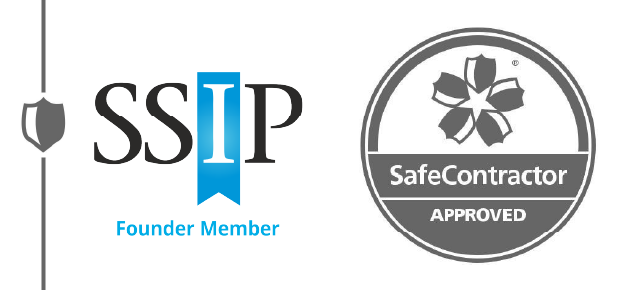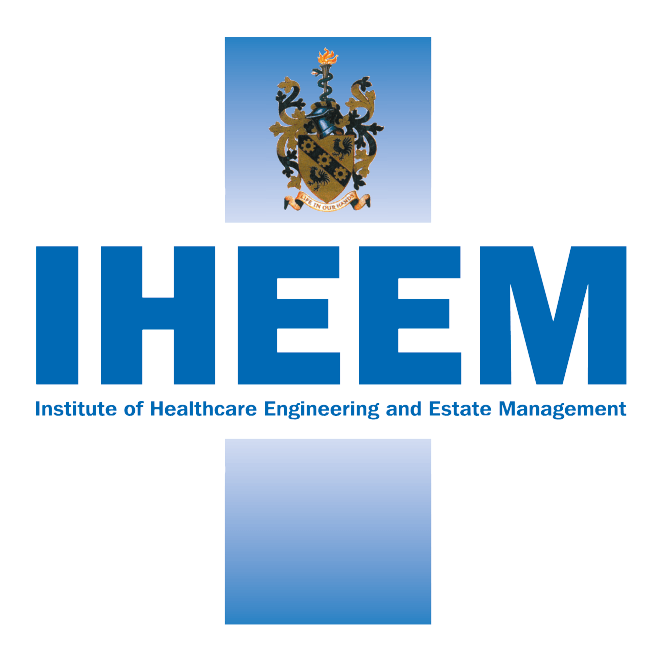After taking delivery of iM Med’s EndoPax endoscope packing system, Emma Grange, assistant endoscopy practitioner at Gloucestershire Royal Hospital, is full of praise.
“It’s a brilliant machine. Quick, easy and it extends the life of the scope,” says Emma.
“It eases the pressure on the department as the gas packed scopes have 30-days aseptic storage and we have more scopes than drying cabinet space. We’re mainly using
EndoPax for non-auxiliary scopes which go out of the department.
“After the vacuum, it injects an inert gas mix, which makes it safer than systems which add additional chemicals that need to be flushed out before the next use.”
Emma explains: “EndoPax is the machine of choice if we need to empty a drying cabinet. It’s quick to use and easy to process scopes through. We use it regularly now.
“We had one of the earlier vacuum packing systems but were struggling to get the gas and the bags from the supplier. We trialled other machines as part of our standard protocol.
“We purchased another system that takes about 15-minutes for the process and injects a chemical mix into the scope. That has to be flushed out before the next procedure.
“In contrast, the EndoPax takes less than two minutes, which includes packing and scanning the vacuum-packed scope. The packed scope goes into one of our own trays. We’re generally using it for 15 to 20 scopes a week. All the cystoscopes are vacuum bagged using the EndoPax. We usually have 12 to 15 pre-packed, ready to go to main
theatres and clinics on site. Some of our therapy scopes are gas packed too, as they’re not used as regularly as standard scopes.
“We sometimes send scopes to our sister site, Cheltenham General Hospital. These are vacuum packed using the EndoPax and transported there. It saves having to wash them
again on arrival. If they need a scope quickly, we can send a vacuum packed one, so as not to delay their lists.”
Summarising the EndoPax process, Emma says: “Each stage of the process and the operator’s ID is scanned into the track and trace system. We take a scope from the drying cabinet after a minimum of four hours drying time. The scope is placed into the bag, making sure that the ETO caps are on and all accessories are included. The bag is placed into the EndoPax machine, ensuring the bag’s gas inlets line up. Lowering the lid starts the process.”
The system removes air from the bag. The endoscope is fully conditioned within the lumens and other surfaces with a specially formulated gas mixture to inhibit aerobic and anaerobic bacterial growth. Without the addition of chemistry to the terminal packing process, potential risk is reduced to the endoscope, patient and user.
“The bag is sealed and the lid lifts automatically,” says Emma. “EndoPax’s IMS independent monitoring system) prints out a label which is fixed onto the bag. We print an extra label so that it’s available for the patient notes if required.
“The vacuum- packed scope is then placed in one of our Cleanascope transportation trays in a green liner to indicate that it is clean. We also write on the box what the contents are and the date it expires from. The whole process takes less than two minutes.
“It’s a very simple process and easy to remember if you’ve not used the machine for some time. It’s very easy to train new staff. Everyone likes it.”
As well as being responsible for the EndoPax machine, iM Med also handles the weekly, quarterly and annual testing, service and maintenance of the department’s endoscope washer-disinfectors, and two of the drying and storage cabinets. “If we’ve had any problems, we’ve found that all the iM Med team are really good,” says Emma. “They respond very quickly to email and phone calls. iM Med are very approachable. Helpful whenever we need. The EndoPax has been excellent and reliable. We’ve no issues whatsoever.”
The main user of Endopax is endoscopy technician, David Starowicki, who says: “It’s a good piece of kit - very reliable. I’m very happy with it. It’s quick and easy to use. Just one minute is all it takes.
“We need to get the job done quickly and efficiently. So, EndoPax fits the bill perfectly. It’s very straightforward, all preset and no chemicals are used.
“All we needed was the initial training. While iM Med’s engineers look after the endoscope reprocessors, they’ve not been needed on the EndoPax - it’s so reliable.”
“With Endopax there’s no need for a tray or platform for the scope to be placed on. It just goes into the bag. The bag and scope will drop into any existing scope transportation system. So, no further equipment or accessories are needed.”
Senior sister, Sarah Vaughan-Davis says: “I have been pleased with the response from the team to the EndoPax. Over the years many systems have been trialled. As the EndoPax is easy to use it is liked by the staff, used regularly because of this and new staff quickly gain confidence with the system.
“Full training and updates are also provided by iM Med. Evidence of training is kept in the department and uploaded onto the JETS Workforce competency site. The EndoPax is also pleasant to look at and compact which is important when there is limited space available within the department.”
Simon Baker, sales manager iM Med, says: “Hospitals like EndoPax. It’s fast, simple and easy to use - less than 30 seconds to draw the vacuum and inject the inert gas mixture. The cost per cycle is extremely low too - just £2.50 to £3.00.
“There are no connections to the scope. A cap prevents any pressure build up and potential damage. The bag has a membrane specifically made for gas packing.
“Once the vacuum has evacuated all the air, an inert gas is injected into the scope. This reduces the risk of microorganism growth.”
“The system has been type-tested and is fully validated by a specialist UKAS accredited laboratory.”
Simon says: “With Endopax there’s no need for a tray or platform for the scope to be placed on. It just goes into the bag. The bag and scope will drop into any existing scope transportation system. So, no further equipment or accessories are needed.”
Emma adds: “We’re a reference site for EndoPax, and we’re happy to demonstrate it to colleagues and tell them about our experience with the system. It’s brilliant. Fast, easy to use and safe.”
For further information, call iM Med on 01223 440 475











